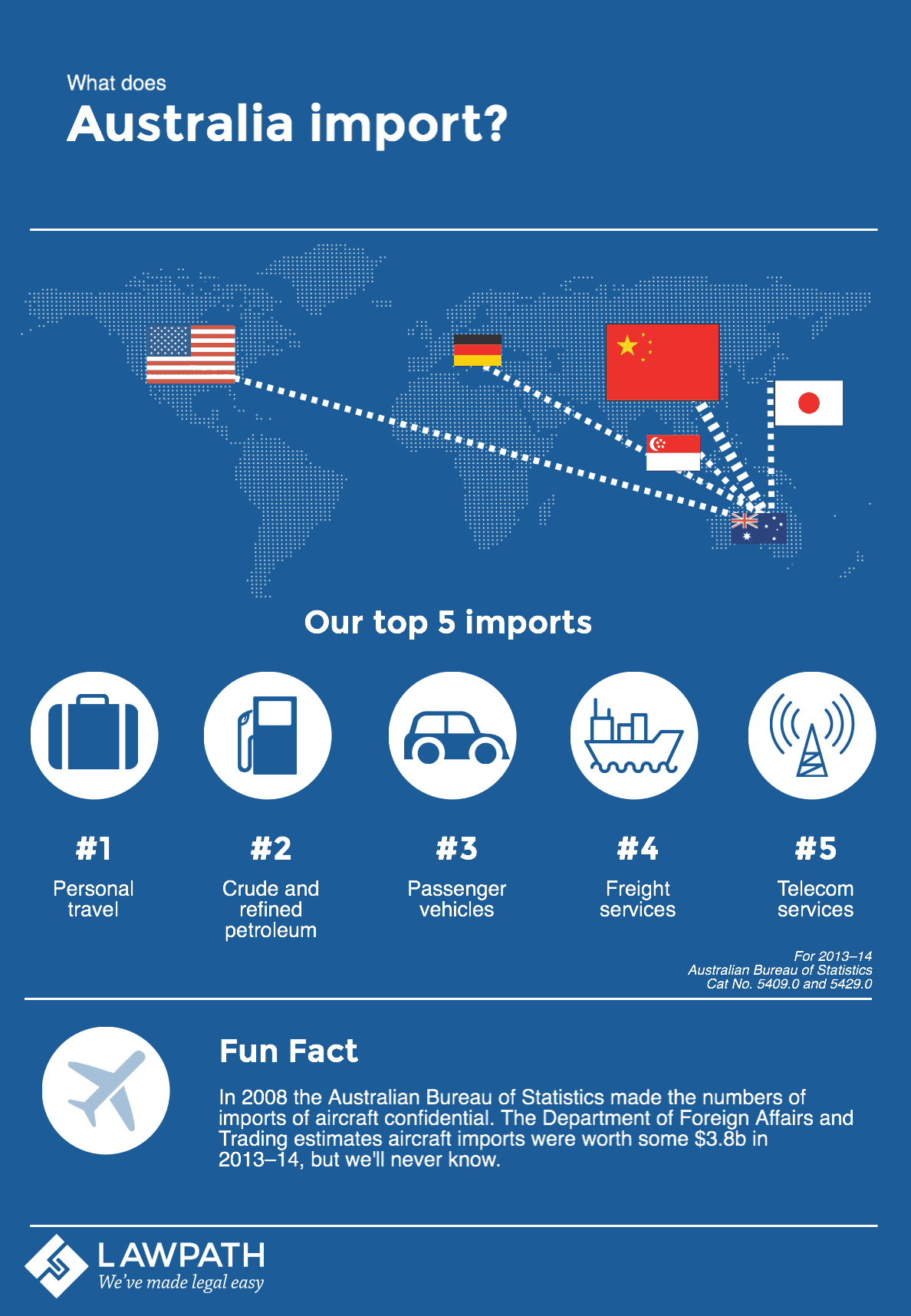Sydney-based lawyer, formerly Paralegal at Lawpath.
As a medium-sized economy but also an island continent, it might be surprising to know that Australia has historically had a trade surplus (that is, we export more than we import). From the early days of bringing in convicts, mutton and anything else that would keep the colony alive, to a modernised and globalised economy, it’s interesting to note what is now inside those freight containers arriving on our shores.
In 1906, when the Australian Bureau of Statistics first started keeping records in leather-bound books, our main imports were of textiles and apparel as well as manufacturing equipment, a good reflection of our economy at the time. Our economy has now shifted, especially with the post-war boom, to a more soft labour and professional services economy. The infographic below shows you what our imports are in 2013-14:

Where to from here?
In the top 5 imports, crude petroleum experienced the biggest growth in 2013-14, followed by personal travel. As the economy continues to shift away from manufacturing and pivots towards Asia, it is likely that finished products, such as vehicles and telecom equipment, will continue to increase and dominate the imports list.
The composition of our imports might also change as the recently negotiated Free Trade Agreement: for more on this, see our article on it.
Let us know your thoughts on Australian importation by tagging us #lawpath or @lawpath.






